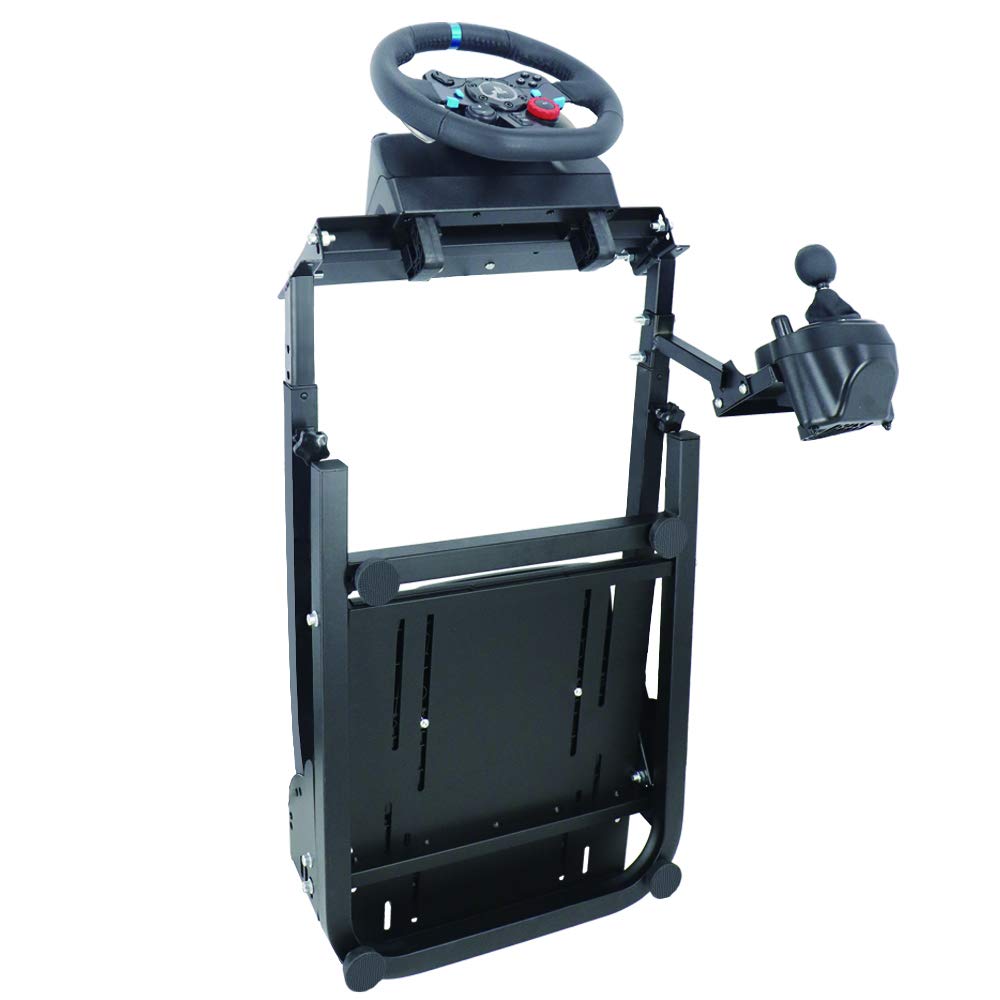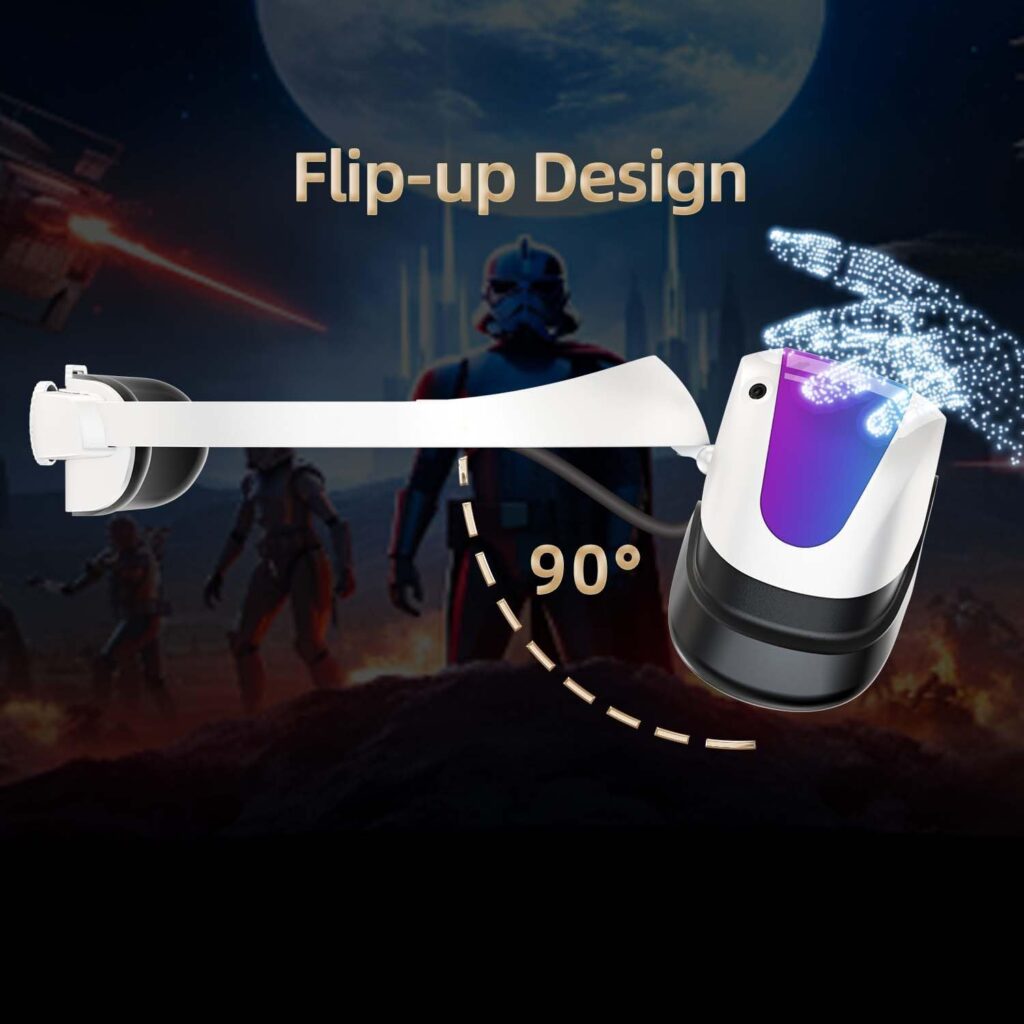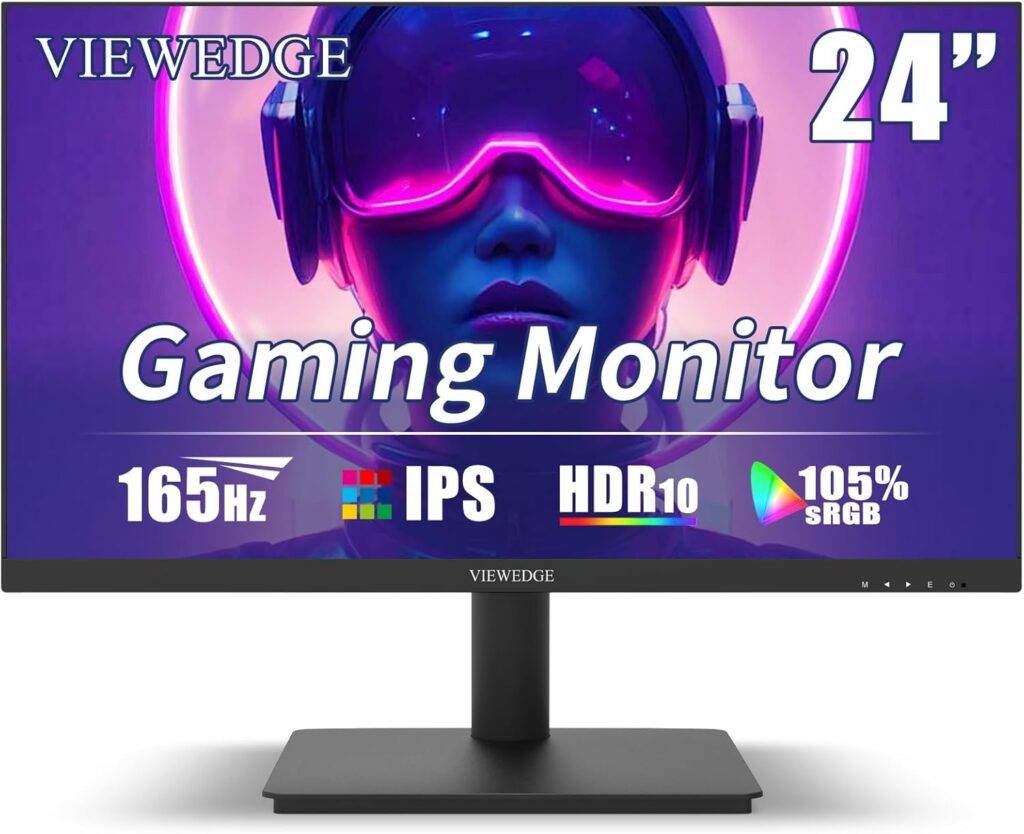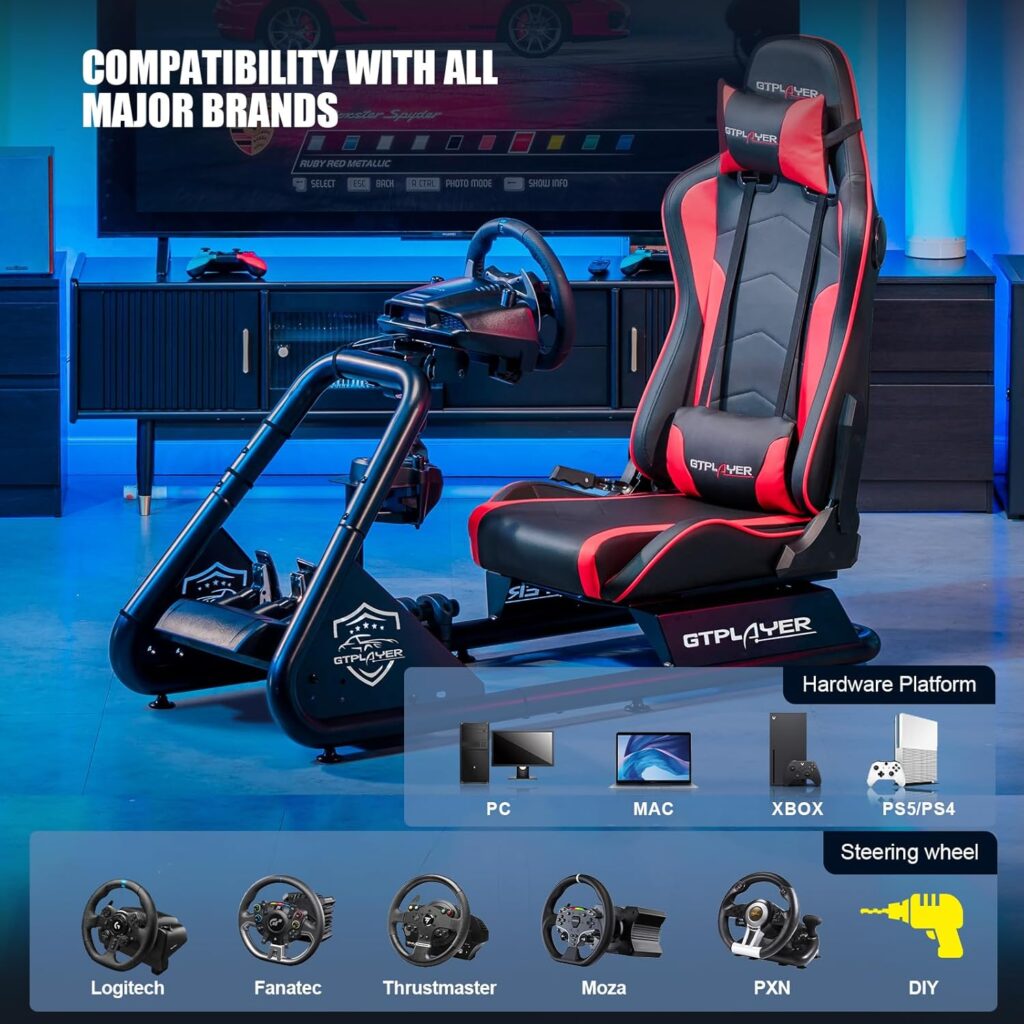They say that practice makes perfect, and when it comes to sim racing, this adage holds true.
But where do you begin? How do you navigate the world of virtual racing tracks and become a skilled sim racer?
In this guide, we will take you through the essential basics of sim racing, from understanding the different types of setups to exploring the world of competitive esports.
Whether you're a complete beginner or looking to take your skills to the next level, this guide is your roadmap to mastering the fundamentals of sim racing.
So, buckle up and get ready to embark on an exhilarating journey into the world of virtual racing.
Key Takeaways
- Having the right setup, such as steering wheels and pedals, enhances the racing experience.
- Budget-friendly options for sim racing include using a gamepad or controller, investing in an affordable racing wheel designed for beginners, purchasing a budget-friendly gaming console, looking for used or refurbished sim racing equipment, and building a basic sim racing setup using affordable materials.
- Improving driving skills in sim racing involves mastering cornering techniques, focusing on smooth and progressive braking and acceleration, and optimizing the racing line.
- Quality sim racing equipment, especially the wheel, provides precision and feedback for a realistic driving experience.
Understanding Sim Racing Basics
Are you ready to dive into the exciting world of sim racing and learn the basics of this virtual form of car racing? Sim racing is a thrilling and immersive experience that allows you to compete against others in real-time on various tracks and circuits.
To truly enhance your sim racing experience, it's important to have the right setup. Sim racing setups can range from simple setups with just a game, console, and controller to more advanced setups called rigs. These rigs include peripherals such as steering wheels and pedals, which provide a more realistic and immersive racing experience.
Steering wheels are a crucial component of a sim racing setup. They allow you to have precise control over your virtual car, just like in real-life racing. High-quality steering wheels provide realistic force feedback, allowing you to feel the car's movements and respond accordingly.
Pedals, on the other hand, mimic the functionality of a car's accelerator, brake, and clutch pedals. They enable you to modulate the throttle, apply brakes, and perform smooth gear shifts, adding another layer of realism to your sim racing experience.
Investing in a good steering wheel and pedal set is essential for sim racing enthusiasts who want to take their skills to the next level. These peripherals not only enhance the gameplay but also provide a more immersive and authentic racing experience.
Types of Sim Racing Setups
Are you ready to explore the world of sim racing setups?
Get ready to discover the most popular options and budget-friendly choices that can kickstart your virtual racing journey.
From basic controller setups to high-end direct drive wheel setups, there's a wide range of options available to suit your preferences and budget.
Popular Sim Racing Setups
Popular Sim Racing Setups encompass a range of options that cater to different levels of immersion and realism. Whether you're a casual gamer or a dedicated enthusiast, there's a setup that suits your needs. Here are some of the most popular setups in sim racing:
- Single Screen Setup: This basic setup uses a single monitor, providing a straightforward and affordable option for beginners. While it may lack the immersive experience of multiple screens or VR, it still allows you to enjoy the thrill of racing.
- Triple Screen Setup: For a more immersive experience, a triple screen setup offers a wider field of view, giving you a greater sense of realism and immersion. It provides a more expansive view of the track, enhancing your racing experience.
- VR Setup: If you're looking for the ultimate immersive experience, a VR setup is the way to go. With virtual reality headsets, you can step into the driver's seat and feel like you're actually racing on the track. It offers a full 3D simulation, making you feel every turn, bump, and acceleration.
- Motion Rig Setup: To take your sim racing experience to the next level, consider a motion rig setup. These setups incorporate motion platforms that mimic the movements of a real car, providing realistic feedback and enhancing the immersion. You'll feel the g-forces, vibrations, and bumps as you race, making it a truly dynamic experience.
These popular sim racing setups offer different levels of immersion and realism, allowing you to choose the one that suits your preferences and budget. Whether you prefer a basic single screen setup or want to go all out with a motion rig, the choice is yours.
Budget-Friendly Options
Now let's explore some budget-friendly options for your sim racing setup that won't break the bank. If you're just starting out, consider using a controller or an entry-level racing wheel, which can provide a more affordable way to experience sim racing. Another option is to purchase a gaming console like the PS4 or Xbox, as they offer a cheaper entry into sim racing compared to high-end PC setups. Additionally, you can save on costs by looking for used or refurbished sim racing equipment such as steering wheels, pedals, and racing rigs. If you're feeling creative, you can even try building a basic sim racing setup yourself using affordable materials. Lastly, participating in budget-friendly sim racing leagues or events can provide access to shared equipment for practice and racing. Take a look at the table below for a quick summary of these options:
| Option | Description |
|---|---|
| Controller | Use a gamepad or controller to get started with sim racing. |
| Entry-level wheel | Invest in an affordable racing wheel designed for beginners. |
| Gaming console | Purchase a PS4 or Xbox console for a more budget-friendly entry into sim racing. |
Improving Your Driving Skills
Now that you've got your sim racing setup sorted, it's time to focus on improving your driving skills.
Let's talk about three key points that will take your performance to the next level: cornering techniques, braking and acceleration, and racing line optimization.
By mastering these skills, you'll be able to navigate corners with precision, find the perfect balance between speed and control, and take the most efficient path on the track.
Cornering Techniques
To improve your driving skills and master the art of cornering, it's crucial to understand and implement various techniques that optimize your approach and exit from each turn. Here are some cornering techniques to help you become a better sim racer:
- Understanding the racing line and apex: By taking the optimal line and hitting the apex of each corner, you can carry more speed through the turn.
- Modulating throttle and brake inputs: Smoothly applying throttle and brake helps maintain control and stability during corner entries and exits.
- Utilizing trail braking: This technique involves braking while entering a corner, gradually releasing the brake as you turn in, allowing you to carry more speed through the corner.
- Mastering weight transfer: Properly transferring weight to the tires improves cornering stability and grip.
Braking and Acceleration
To improve your braking and acceleration skills and become a more proficient sim racer, it's essential to focus on smooth and progressive inputs while maintaining control and maximizing traction.
Braking is a crucial aspect of sim racing, and mastering it will greatly enhance your performance on the track. Practice smooth and progressive braking to avoid locking up your tires and maintain control of the car. Additionally, trail braking is a technique that involves maintaining some brake pressure while entering a turn to shift the car's weight and improve traction. Understanding threshold braking is also important, as it allows you to optimize your braking efficiency by braking right up to the point before the tires lose grip.
On the other hand, for acceleration, modulating the throttle is key to smooth and controlled acceleration out of corners. This prevents wheelspin and helps maintain traction. Experiment with different braking points and acceleration strategies to find the optimal approach for each corner and track.
Racing Line Optimization
As you continue to refine your braking and acceleration skills, it's time to shift your focus towards mastering the art of racing line optimization, a crucial aspect of improving your overall driving skills in sim racing.
Here are some key points to consider:
- The racing line is the fastest path around a race track, maximizing speed and minimizing distance.
- Understanding the racing line involves identifying the best entry, apex, and exit points for each corner.
- Optimizing your driving skills requires mastering different racing lines for various corner types (e.g., hairpins, sweepers, chicanes).
- Consistently practicing and refining your racing line technique is essential for improving lap times and overall performance.
To enhance your racing line optimization, consider investing in high-end sim racing equipment like a steering wheel.
Additionally, utilize sim racing tools such as ghost cars and telemetry data to analyze and compare racing lines for continuous improvement.
With dedication and practice, you'll soon be able to navigate the track with precision and achieve faster lap times.
Importance of Sim Racing Equipment
For a truly immersive and realistic sim racing experience, having quality equipment is essential. When it comes to sim racing, the most important piece of equipment is the wheel. A good sim racing wheel provides a level of precision and feedback that's crucial for a realistic driving experience. The steering wheel is where you'll feel the resistance and forces as you maneuver through corners and over bumps, giving you a better sense of the car's behavior.
In addition to the wheel, other sim racing equipment such as pedals and a racing seat can further enhance the authenticity of the experience. High-quality pedals with accurate sensors allow for precise throttle and brake control, while a comfortable racing seat keeps you properly positioned and immerses you in the virtual cockpit.
Investing in reliable sim racing equipment can make a significant difference in your performance on the track. With improved control and feedback, you'll be able to push your limits and compete at a higher level in online racing events and esports competitions.
Don't underestimate the importance of sim racing equipment – it can truly transform your sim racing experience into something extraordinary.
Exploring Sim Racing Peripherals
Now let's take a closer look at the exciting world of sim racing peripherals and the incredible options available to enhance your virtual racing experience.
Sim racing peripherals are essential for creating a realistic and immersive environment that mimics the sensations of being behind the wheel of a real racing car.
Here are some of the key peripherals to consider:
- Racing Wheels: These are the heart of any sim racing setup. They come in various types, such as direct drive, belt drive, and gear drive, each offering different levels of force feedback and realism. Choose a wheel that suits your budget and preferences.
- Pedals: High-quality pedals are crucial for precise control over braking and acceleration. Load cell and potentiometer pedals are common options, providing varying levels of sensitivity and realism.
- Wheelbases: Wheelbases serve as the core of a sim racing setup, connecting the racing wheel to the gaming platform. They're available in direct drive and belt drive variants, each offering different levels of force feedback and responsiveness.
- Additional Peripherals: To further enhance your sim racing experience, consider adding peripherals like shifters, handbrakes, and button boxes. These accessories provide greater control over your virtual vehicle and add an extra layer of immersion.
Setting Up Your Sim Racing Gear
When it comes to setting up your sim racing gear, ensuring that you have the right equipment and a well-designed sim rig is crucial for an immersive and fulfilling experience on the virtual racetrack.
The centerpiece of your setup is the racing wheel, which allows you to steer, brake, and accelerate just like in a real car. There are various types of wheels available, including direct drive wheels and force feedback wheels. Direct drive wheels offer unparalleled realism and precision, while force feedback wheels provide a more affordable option without compromising on the experience.
In addition to the wheel, your sim racing setup should include pedals, a sim rig, a seat, and any necessary accessories. The adjustability and compatibility of the sim rig and seat are important considerations to ensure comfort and proper positioning while racing. It's also essential to check the PC hardware requirements and consider investing in a gaming PC for optimal performance and graphics.
To enhance your sim racing experience, consider joining online racing communities. These communities offer competitive multiplayer racing, allowing you to test your skills against other sim racers from around the world. Racing against skilled opponents can push you to improve and provide a more realistic racing experience.
Exploring the World of Competitive Esports
Competitive esports in sim racing opens up a whole new world of structured, exhilarating virtual racing championships. As you delve into the world of competitive online racing, here are some key points to keep in mind:
- Different Classes: Sim racing offers a variety of classes to cater to different skill levels and interests. Whether you're a beginner or an experienced driver, there's a class for you to compete in and showcase your skills.
- Diverse Race Types: Esports events in sim racing feature a range of race types, from endurance races that test your stamina and strategy to sprint races that demand quick reflexes and precision. Each race type offers unique challenges and opportunities for players to showcase their driving prowess.
- Realism and Simulation: Sim racing sets itself apart from mainstream racing games by focusing on realism and simulation. The driving experience in sim racing aims to replicate the feel of being on a real race track, providing an immersive and authentic racing experience.
- Global Competition: Engaging in the world of competitive sim racing allows you to compete on a global stage. You'll have the opportunity to race against skilled drivers from around the world, testing your abilities and pushing yourself to new limits.
Different Classes in Sim Racing
As you continue your journey into the world of competitive online racing, it's time to explore the diverse classes that make up the thrilling realm of sim racing. Sim racing features various classes, each with different vehicle types and racing styles. Let's take a closer look at these classes:
| Class | Description |
|---|---|
| Open-wheel | Single-seater, high-downforce race cars that highlight precision and aerodynamics. Found in Formula 1 or IndyCar simulations. |
| GT | Performance and production-based grand touring vehicles. Popular in series like GT3, GT4, and IMSA. Offers a balance of speed and handling. |
| Touring cars | Modified production vehicles that focus on close-contact racing. Emphasizes door-to-door action and multi-car battles. Simulations like WTCC or BTCC. |
| Rallycross | Off-road racing that combines elements of circuit racing and rally. Features short, intense races on mixed surfaces. |
| Endurance | Long-duration events that test driver consistency and strategy. Involves prototypes and GT cars competing in races like the 24 Hours of Le Mans or the WEC series. |
Each class provides a unique racing experience, catering to different preferences and skill levels. Whether you prefer the high-speed, precision-focused nature of open-wheel racing or the intense battles of touring car racing, there's a class that suits your racing style. It's important to choose a class that aligns with your interests and goals to fully enjoy the experience.
To get started in sim racing, it's crucial to have a rig that can handle the demands of the different classes. Depending on the class you choose, your rig may need to be equipped with a high-quality steering wheel, pedals, and a force feedback system to provide realistic feedback and improve your overall performance.
Exploring Race Types in Sim Racing
Sim racing offers a diverse range of race types, each presenting unique challenges and driving styles for aspiring virtual racers. As you delve into the world of sim racing, it's important to understand the different types of races you can participate in.
Here are four common race types you can explore:
- GT Racing: Get behind the wheel of high-performance sports cars and battle it out on famous tracks around the world. GT racing requires precision and skill as you navigate through tight corners and compete against other drivers.
- Rallying: Strap yourself in for an adrenaline-fueled off-road experience. Rallying involves racing on different surfaces, including gravel, dirt, and snow, while tackling challenging terrain and unpredictable weather conditions.
- Formula 1: Step into the shoes of an F1 driver and experience the thrill of racing in the world's most prestigious motorsport series. Formula 1 races demand exceptional speed, strategy, and aerodynamic finesse as you compete against other drivers in lightning-fast cars.
- NASCAR: Feel the thunderous roar of powerful stock cars as you compete in high-speed oval races. NASCAR races are all about drafting, precise line selection, and mastering the art of bumper-to-bumper racing.
Popular Racing Simulator Games
Now that you have explored the various race types in sim racing, let's dive into the exciting world of popular racing simulator games. These games, such as iRacing, Assetto Corsa, Project CARS, rFactor 2, and Gran Turismo, offer an immersive and realistic sim racing experience. Each game has its own unique features, car selections, and track options, allowing you to find the one that suits your preferences.
One of the key factors that sets these racing simulator games apart is their physics engine and driving dynamics. The developers of each game strive to create a realistic driving experience, accurately simulating the behavior of different vehicles. This attention to detail enhances the authenticity of the gameplay and makes it feel like you're actually behind the wheel of a race car.
Multiplayer modes in these games add another layer of excitement by allowing you to compete with other players from around the world. Whether you prefer circuit racing, endurance races, or even virtual championships, there are plenty of opportunities to showcase your skills and compete against others.
To further enhance the sim racing experience, regular updates, downloadable content, and modding communities ensure that these games stay fresh and offer endless possibilities for customization. Whether you're a beginner or an experienced sim racer, these popular racing simulator games provide a thrilling and immersive way to get started in the world of sim racing.
Frequently Asked Questions
How Do I Get Started in Simracing?
To get started in sim racing, you'll need some essential equipment. A racing wheel, pedals, and a computer or gaming console are a must. Finding the right setup is crucial, so take the time to configure your sim racing rig for optimal performance.
Once you're ready to hit the virtual tracks, joining online communities is a great way to connect with fellow enthusiasts, get valuable tips, and engage in friendly competition.
Get ready to experience the thrilling world of sim racing!
Can Simracing Teach You How Do You Drive?
Simracing can definitely teach you how to drive! It offers a range of benefits for real life driving skills.
By simulating realistic driving scenarios, it helps improve your racing instincts and decision-making abilities.
Simracing also plays a crucial role in developing precision and control in driving. It allows you to practice and refine your skills in a safe environment.
What Games to Start Sim Racing?
If you're starting out in sim racing, popular titles like Gran Turismo and Forza Motorsport are great choices. They offer an enjoyable, arcade-like experience.
For a more realistic feel, consider PC gaming with games like Assetto Corsa Competizione and iRacing. Research features, graphics, and community reviews to make the right choice. Try demos and online forums for insights.
Joining online racing communities can enhance your experience with competitive multiplayer and sim racing leagues.
How Do You Get Good at Sim Racing?
To get good at sim racing, you need effective practice strategies. Consistency and regularity are key. Study vehicle setups and driving techniques, and understand the dynamics of the racing games you play.
Invest in high-quality equipment and peripherals to enhance your experience. Mental focus and concentration are crucial in sim racing, so stay in the zone.
Join online racing communities and challenge yourself in esports events. Seek out resources and tutorials to continuously improve your skills.
Conclusion
So there you have it, a beginner's guide to sim racing. Whether you're new to the world of virtual racing or looking to improve your skills, this comprehensive guide has covered all the essentials.
From understanding the basics to exploring different setups and improving your driving skills, you now have the knowledge to dive into the exciting world of sim racing.
So grab your equipment, choose your racing simulator game, and get ready to experience the thrill of virtual racing at its finest.
Happy racing! (Rhetorical device: Alliteration)




